Cascadia Research will be undertaking a 13-day field project off the island of Kaua‘i starting February 4th, 2015. This will be our 12th field project and 8th year working off Kaua‘i and Ni‘ihau. This project is funded by the U.S. Navy as part of their monitoring program. The primary purpose of the project is to obtain information on movements and habitat use of a number of species of toothed whales through the deployment of satellite tags. We are also hoping to examine movements of animals before, during, and after a Submarine Commanders Course being undertaken by the U.S. Navy later in February.
As we do during all of our field projects, we will also be obtaining photos from most species of odontocetes we encounter, to contribute to ongoing studies of residency patterns and social organization and to estimate population sizes, and collecting biopsy samples for toxicology and genetic studies. Last year we had two similar field projects, one in February and one in October, and like those projects we expect to have higher encounter rates than normal since we’ll be working in collaboration with the Marine Mammal Monitoring on Navy Ranges (M3R) program, using the Navy’s hydrophone range off Kaua‘i (see map below) to localize animals. When on the water we will be in constant contact with Navy researchers from the M3R program to help direct us to groups that they are detecting acoustically. This will allow us to confirm the species (to aid in using the acoustic range for research purposes on different species), and should make it much easier for us to find groups of whales and dolphins for tagging, photo-ID and biopsy sampling.
Species that we are hoping to satellite tag include rough-toothed dolphins, bottlenose dolphins, false killer whales, short-finned pilot whales, melon-headed whales, pygmy killer whales, sperm whales, Cuvier’s beaked whales, and Blainville’s beaked whales.
The research team includes Daniel Webster, Brenda Rone, Sarah Ashworth, Kelly Beach, Robin Baird, and a number of volunteers.
End of project update
In the last two weeks we made it out on the water on 9 of 13 days, covered 1,136 kilometers, and had 34 sightings of five species of odontocetes (plus one sighting of fin whales). Because of the unusual westerly winds we ended up surveying on four different days off the east side of the island, an area we haven’t surveyed since 2003.
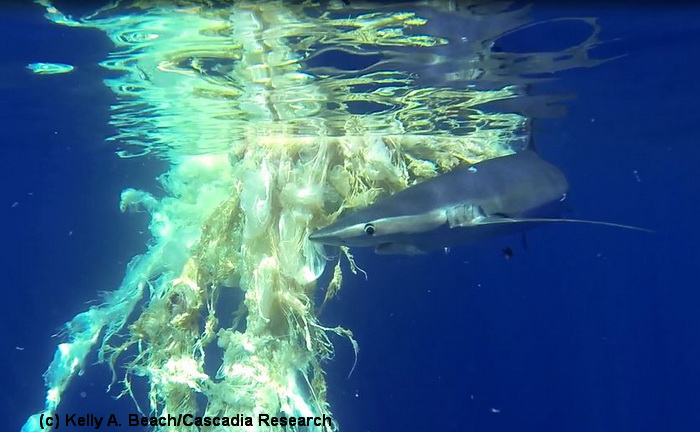
February 16th was our last day on the water, and with light winds we were able to survey far to the north of the island (see map below). Besides deploying another depth-transmitting tag on a bottlenose dolphin, the most unusual sightings were of two dead whales, both in very advanced states of decomposition. The one above is being fed on by a Blue Shark – based on what appears to be a long pectoral flipper, we think this whale was a humpback whale, and collected some samples for genetics. This still was taken from a GoPro video – photo by Kelly A. Beach.
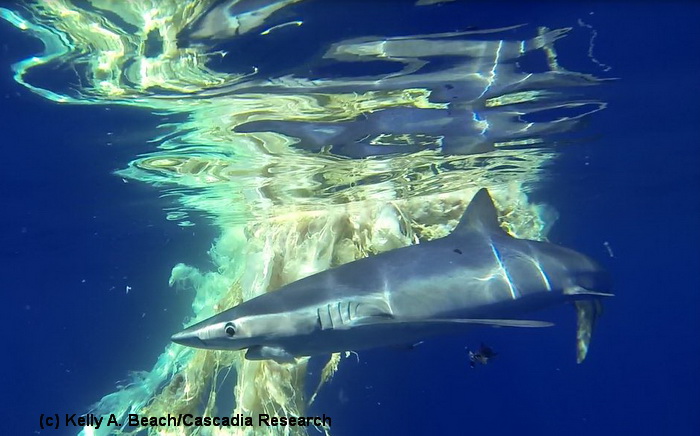
A close up of the Blue Shark and the dead whale. Photo by Kelly A. Beach

This map shows most of our survey tracklines for the trip, the loop far to the north of the island is the area we covered on February 16th, a 223 km track – both of the dead whales were found along the northern most part of the track (one near the northeast red ‘arrow’ shown)
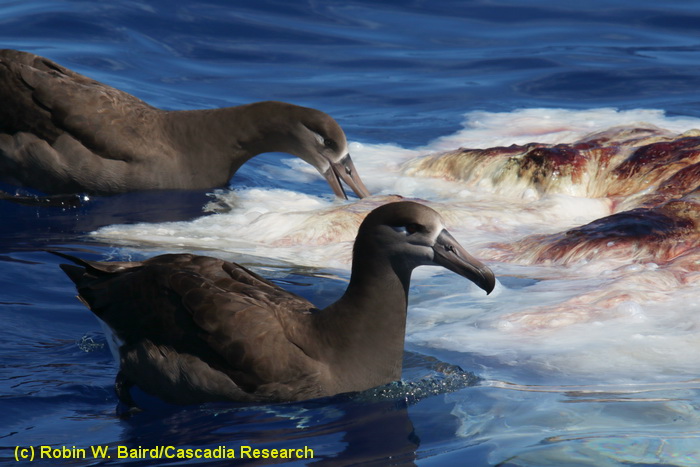
The dead whale also attracted a lot of scavengers – 51 Black-footed Albatross and 4 Laysan Albatross. Photo by Robin W. Baird
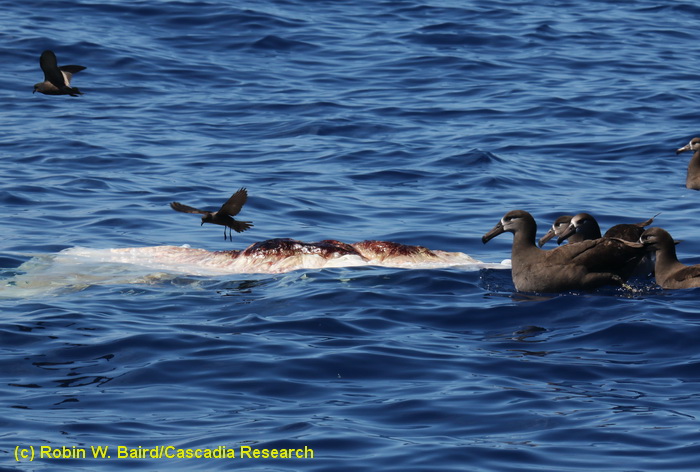
Two storm petrels and five Black-footed Albatross feeding on the first dead whale. Photo by Robin W. Baird
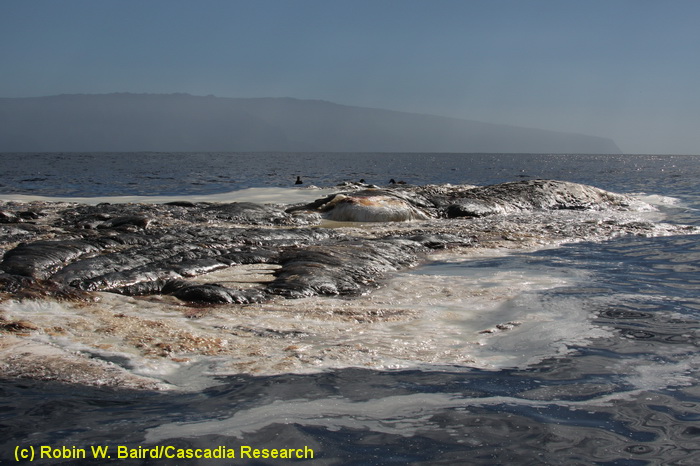
The second dead whale found February 16th – there were 118 Black-footed Albatross and 34 Laysan Albatross, along with four storm petrels, feeding on this whale. The north shore of Kaua‘i is in the background. Photo by Robin W. Baird
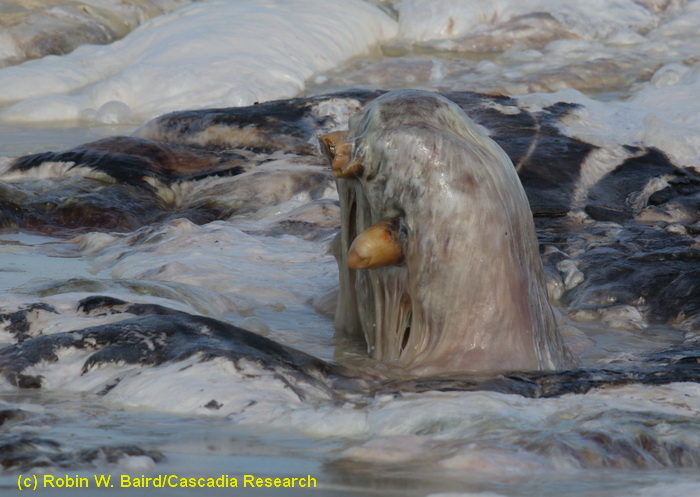
We were able to confirm the species of the second dead whale, a sperm whale – this photo shows the tip of the lower jaw with several teeth visible. From the wear on the teeth this was probably a very old individual. Photo by Robin W. Baird
February 12th update
Today we had what will surely be our longest day of the trip, on the water before sunrise and off just after sunset. With light and variable winds forecast we were able to cover 224 kilometers including surveying areas we rarely get to – off the southeast side of Ni‘ihau and in deep water (>3,000 m) to the south of Kaua‘i.
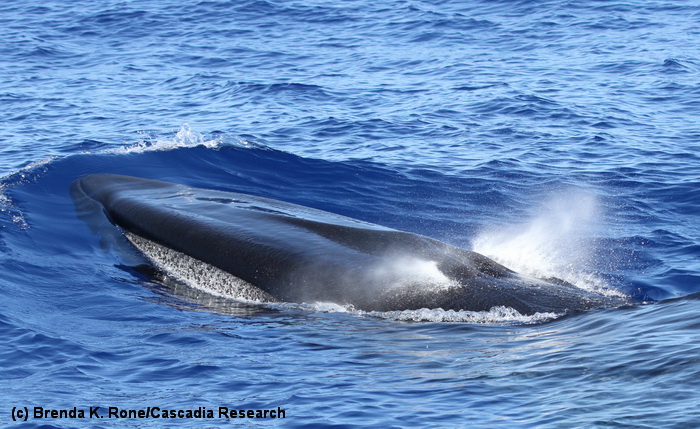
Although we encountered several groups of rough-toothed dolphins, were able to deploy two satellite tags on short-finned pilot whales, the highlight of the day was an encounter with two fin whales – this species is quite uncommon around the main Hawaiian Islands – this was our first sighting ever off Kaua‘i and only our second sighting of the species in our 15 years of working in Hawai‘i (our first sighting was off Lana‘i in December 2012. Photo by Brenda K. Rone
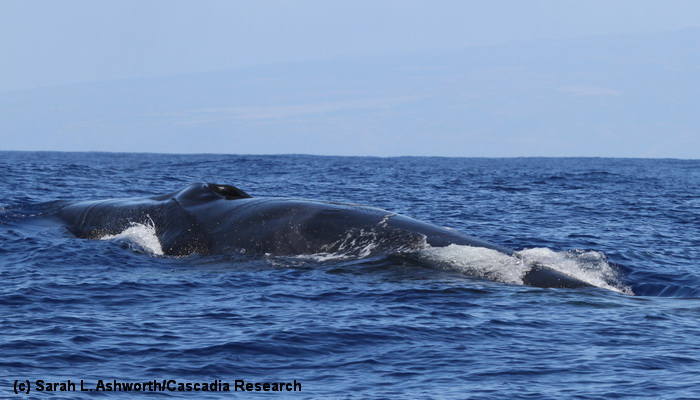
Fin whale south of Kaua‘i, February 12, 2015. Photo by Sarah L. Ashworth
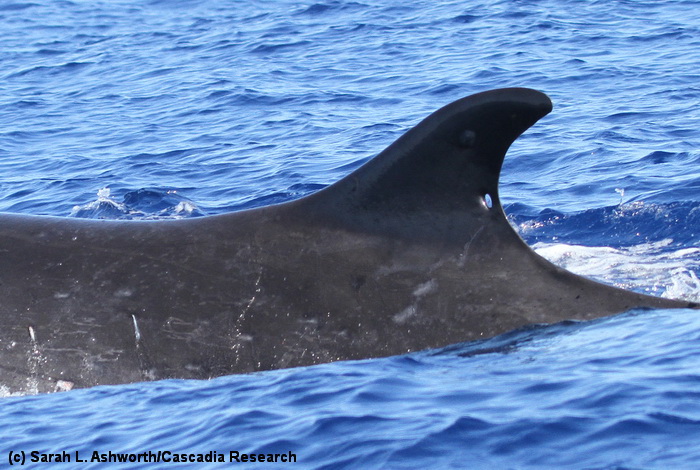
Although we were able to get good identification photos of both individuals, unfortunately we were not able to deploy a satellite tag to track movements. This individual has a very distinctive dorsal fin with a hole through the fin, probably caused by a cookie-cutter shark bite. Photo by Sarah L. Ashworth
February 11th update
After two days on land due to strong west winds, on the 11th we were able to get back out off the east side of Kauai, and had a productive day working with rough-toothed and bottlenose dolphins. We were able to deploy depth-transmitting satellite tags on one individual of each species and obtain identification photos of several dozen dolphins.
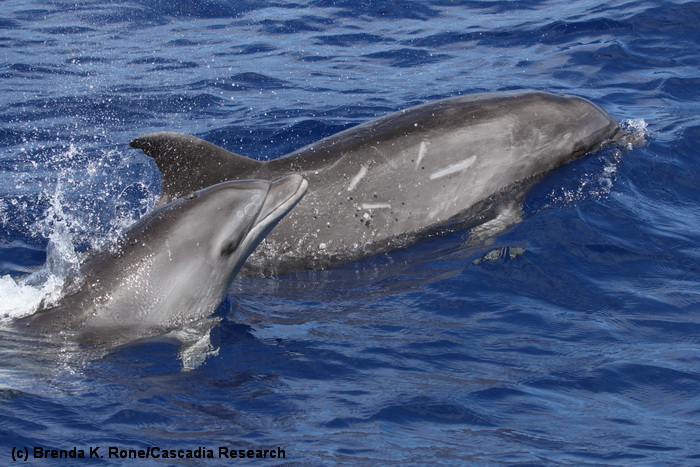
Bottlenose dolphin mother and calf, February 11, 2015. Photo by Brenda K. Rone
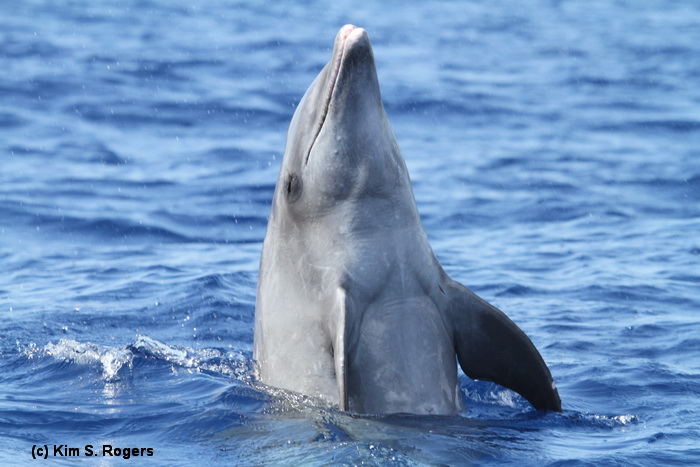
Bottlenose dolphin spyhopping, February 11th, 2015. Photo by Kim S. Rogers
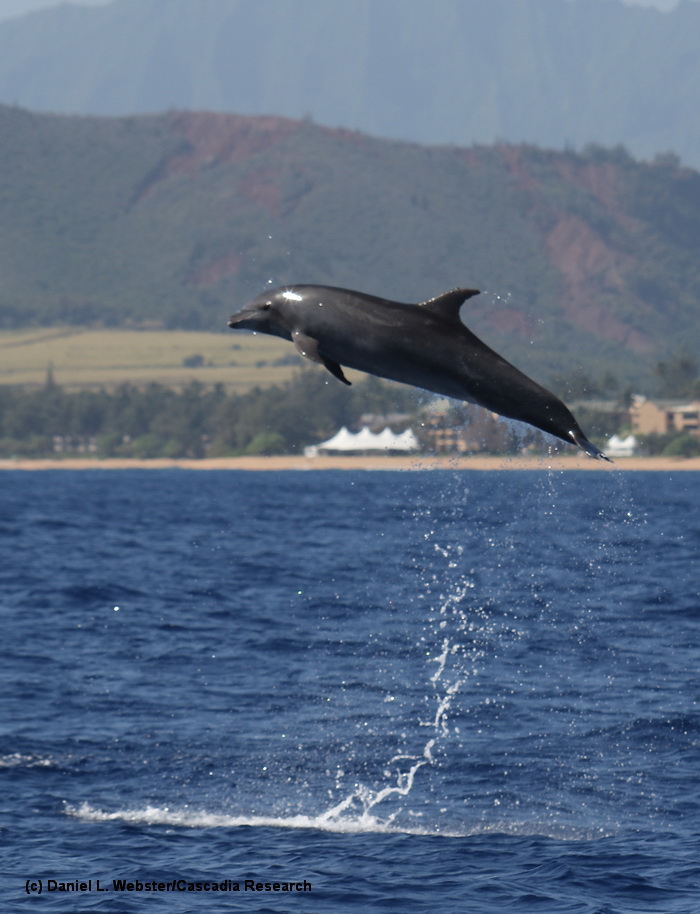
Bottlenose dolphin leaping off the east side of Kauai, February 11th, 2015. Photo by Daniel L. Webster
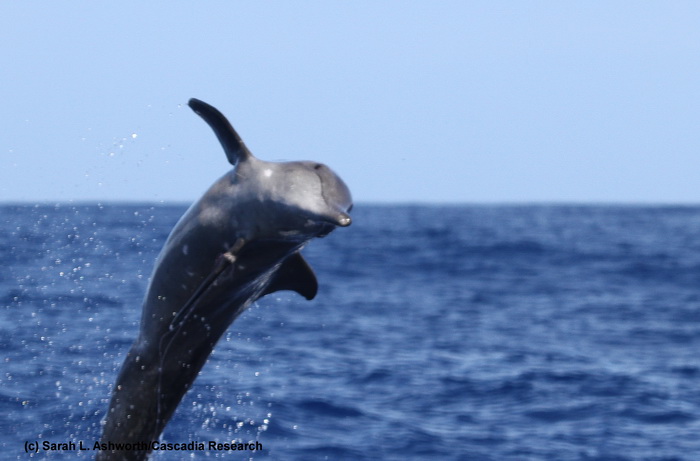
A rough-toothed dolphin with fishing line wrapped around one of it’s pectoral flippers, February 11, 2015. Photo by Sarah L. Ashworth
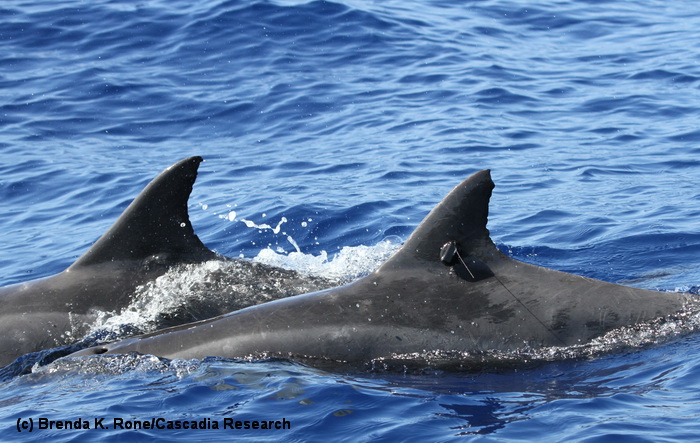
Rough-toothed dolphin with a depth-transmitting satellite tag, photo by Brenda K. Rone.
February 8th update
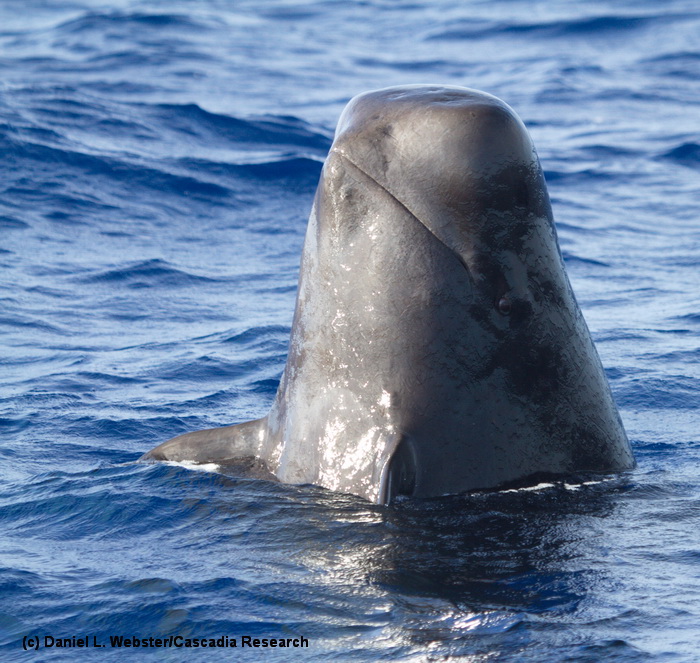
Short-finned pilot whale spyhopping, February 8th, 2015. Photo by Daniel L. Webster. The last few days have been windy, but today we encountered a group of about a dozen pilot whales, and were able to deploy two satellite tags to track their movements – one of the tags was a depth-transmitting tag so we will also be getting information on diving behavior.
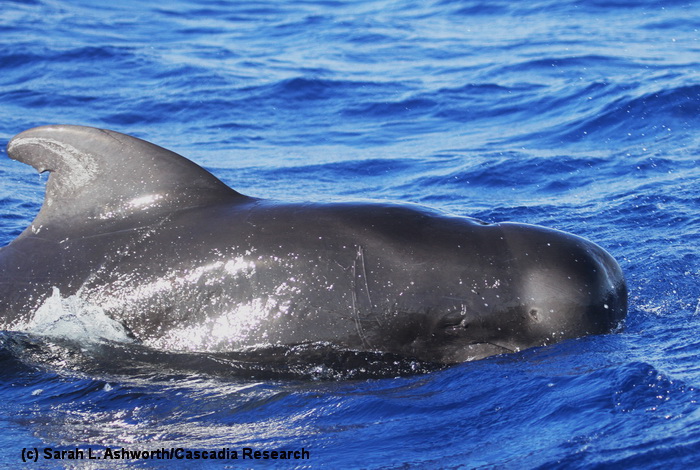
Short-finned pilot whale, February 8th, 2015. Photo by Sarah L. Ashworth
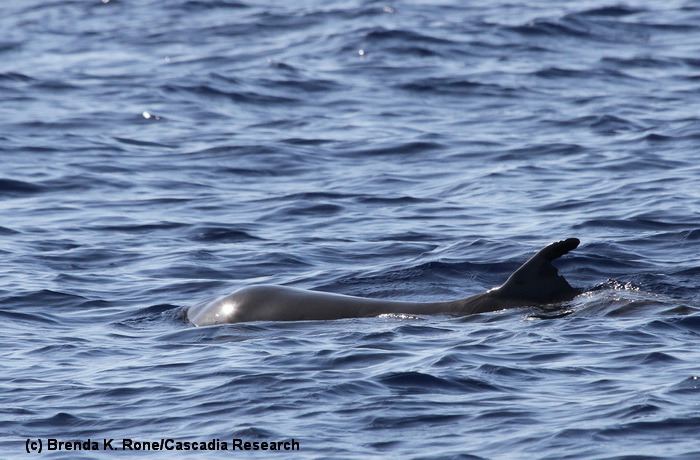
On February 7th the winds were coming from the northwest, so we were unable to work on the range, but encountered a pair of dwarf sperm whales off the southeast corner of the island, and were able to get good identification photos of one individual. This is our first confirmed encounter with a dwarf sperm whale off Kaua‘i since our May/June 2003 trip – off Hawai‘i Island there is a small resident population of dwarf sperm whales, but they appear to be very rare off Kaua‘i or Ni‘ihau.
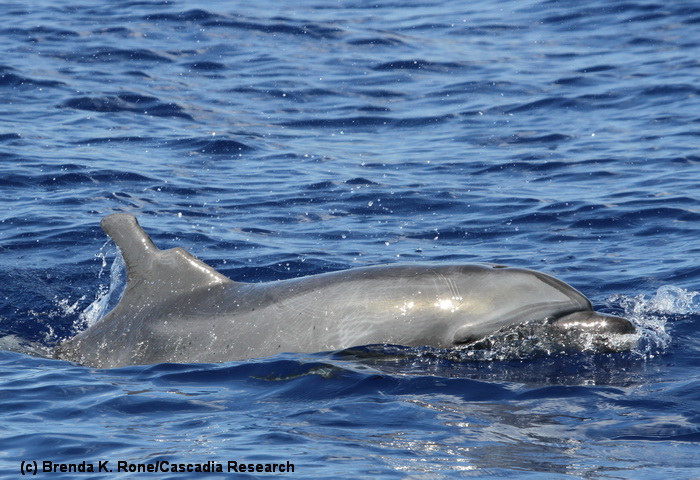
On February 6th we had strong winds from the west again so worked off the east side of the island – on the 6th we encountered a group of three bottlenose dolphins – this one has a large healed injury on the leading edge of the dorsal fin. We’ll compare our photos of the group to our catalog to determine whether this group is part of the Kaua‘i resident population.
February 5th update
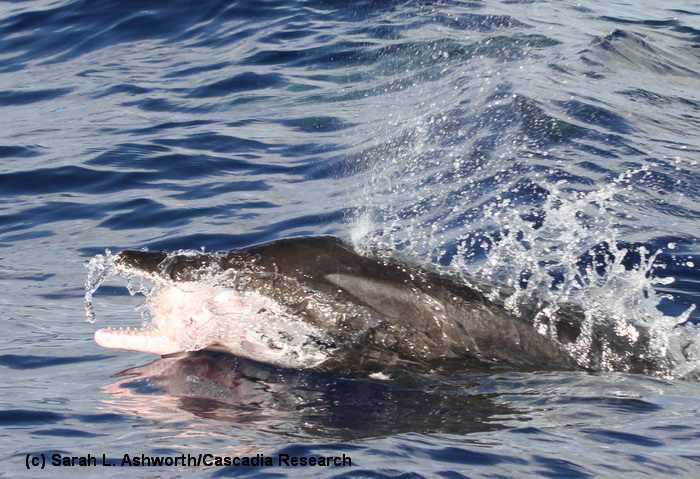
Another day working off the east side of the island, this time based out of Nawiliwili. Yesterday and today are the first days we’ve surveyed off the east side of Kaua‘i since our first research effort off the island in May and June 2003, so while we are unable to work in our primary study area due to strong winds, it is giving us an opportunity to survey in a poorly-studied area. Most strikingly, in the two days of effort we’ve had 11 sightings of rough-toothed dolphins, including the individual above with part of a large fish in the mouth (photo by Sarah Ashworth).
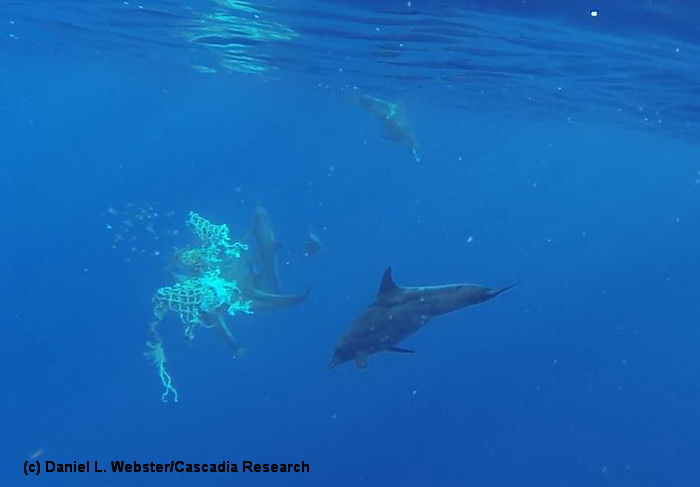
One of the groups of rough-toothed dolphins was interacting with a bunch of discarded netting material that was being used as a refuge by a school of fish – these stills were taken from GoPro footage obtained just by holding the camera over the side of the boat – this photo shows seven different dolphins associating with the net and school of fish (visible just to the left of the net).
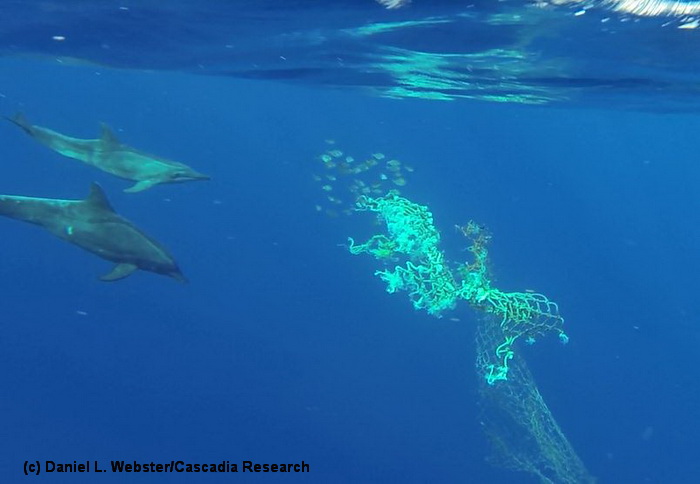
This photo shows the two different net fragments, one (the darker net) that is being dragged away from the other by one of the dolphins, probably to make it easier to catch the fish.
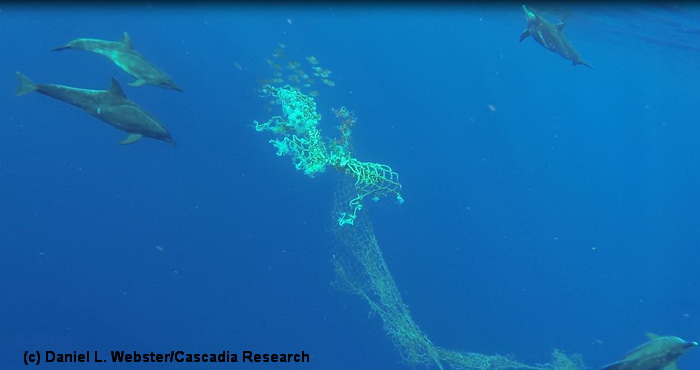
This photo shows the dolphin in the bottom right that was dragging the one net away from the other, by snagging the net with it’s dorsal fin.
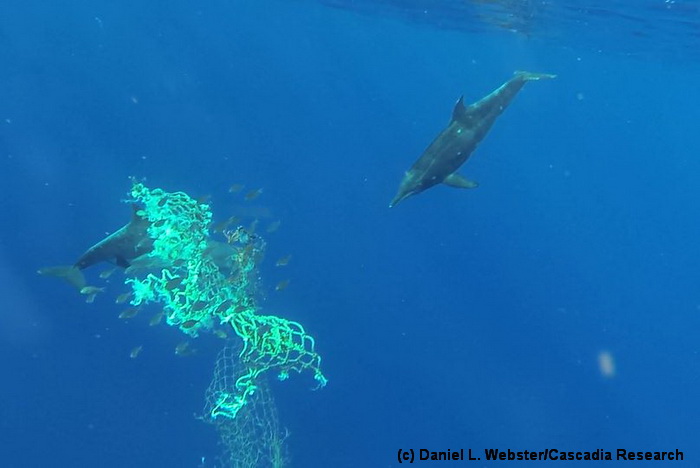
Rough-toothed dolphins around the net, apparently trying to catch the fish associated with it.
February 4th update
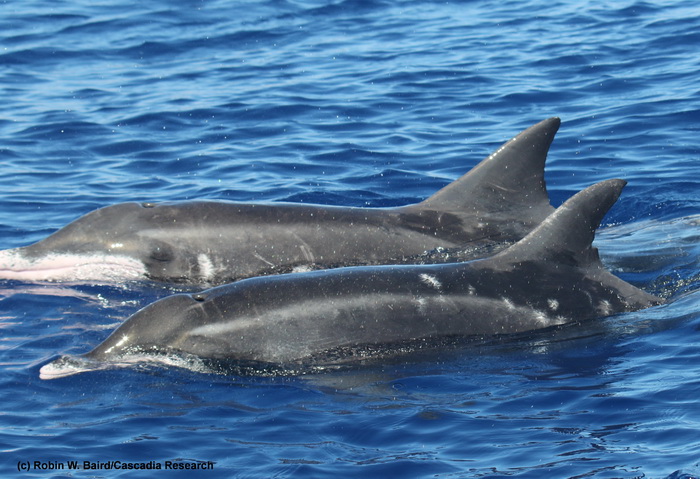
Today was our first day on the water – with forecast winds of 15 knots from the west we were unable to work on the range, and had low expectations for finding anything. Rather than leaving from Kikiaola small boat harbor we departed from Port Allen, located to the east, and headed to the east to see if a lee was present. Once off Kapaa, on the east side of the island, calm waters were found, along with three groups of rough-toothed dolphins. These two individuals show both the sloped melon (or forehead) of the species, and some of the features we use to identify individual rough-toothed dolphins – notches on the dorsal fins, pigmentation patterns, and scarring.
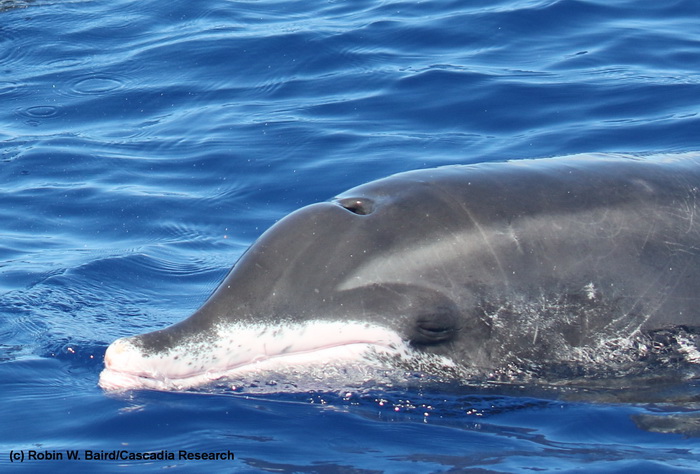
Close up of the head of a rough-toothed dolphin, February 4th, 2015. Photo by Robin W. Baird
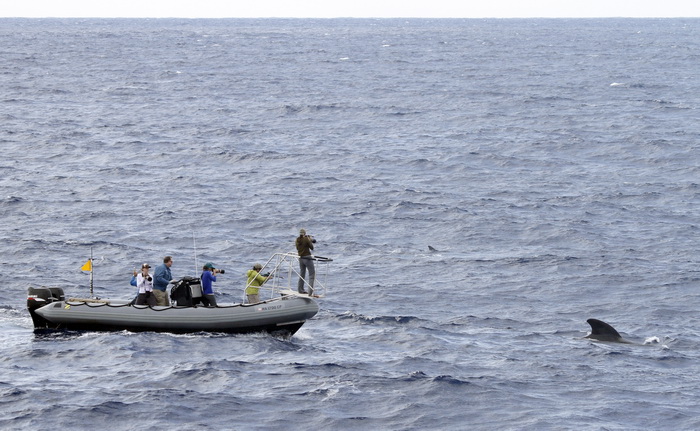
Our research vessel with short-finned pilot whales off Kaua‘i in February 2014. Photo by Jessica Aschettino.
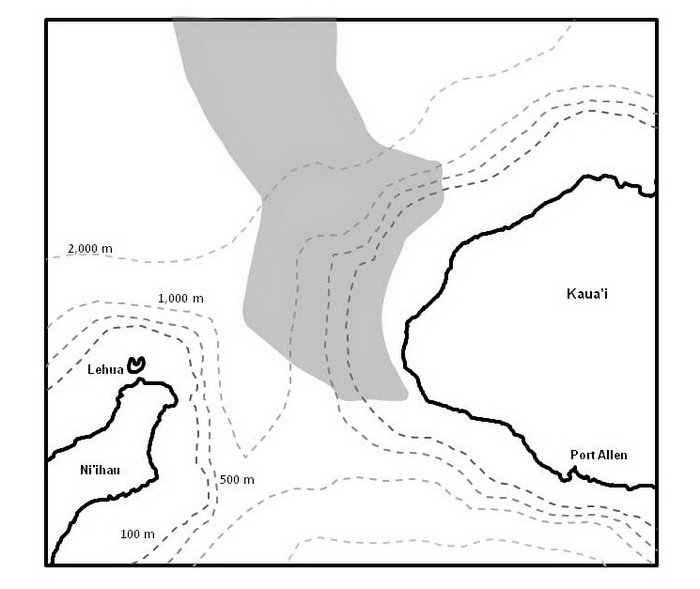
Our study area for the project. The Navy’s hydrophone range it shaded – approximately 175 hydrophones are spread across the shaded area connected to the M3R system.
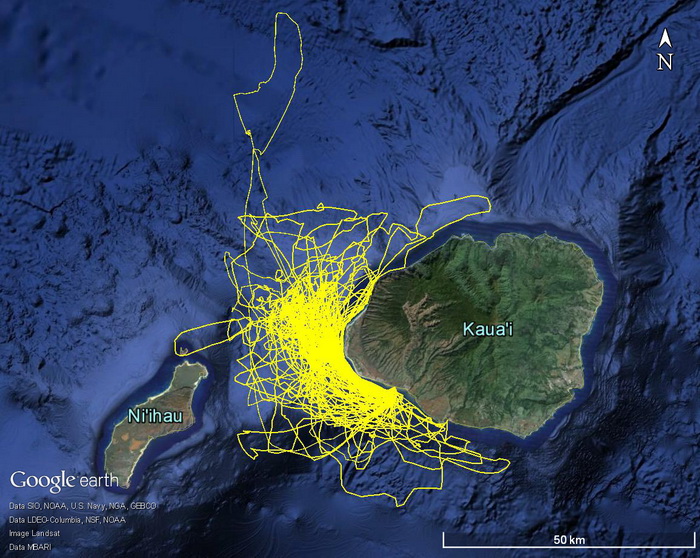
Our survey effort off Kaua‘i and Ni‘ihau over the last three years – this map shows tracklines from projects in 2012, 2013, and 2014.
Photos should not be used without permission. Contact Robin Baird (rwbaird (at) cascadiaresearch.org) for permission.
Sign up to our Facebook page if you want to receive notices of when information is posted and updates on other Cascadia projects.